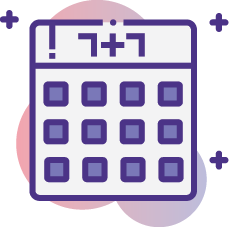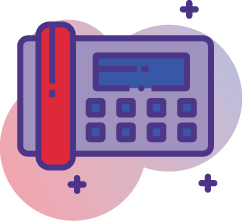Shopping Tips!
It’s getting colder outside up north here which means it’s time to settle in for a long winter’s nap. When I settle in, I like to cuddle up with a good book, a cup of tea, a fireplace, and a blanket.
I enjoy reading. I like reading fiction (give me a Dan Brown or a Nora Roberts and I’ll happily read for hours) or give me business (I love Malcolm Gladwell or Dan Pink), and I’m in my happy place.
Do you love to read?
In honor of American Thanksgiving (which is not celebrated worldwide) and Black Friday(which IS celebrated worldwide), we are having a Black Friday Sale to help you settle down for a long winter’s nap!
For business, I am recommending… me! I have my Dealing with Difficult People ebook which normally sells for $10. If you buy it anytime from Wednesday–Monday, you can also receive the follow-up book Confrontation Skills in PDF for no extra charge. Becuase they are in PDF you can read them on your phone, on your tablet, or your laptop. Very versatile, and (well, I think so) a good read!
The pages will tell how to deal with your difficult person. They will tell you what to say, how to say it, and when to say it. Confrontation Skills will take it all a step further and teach you how to hold yourself together while having a confrontation (which is never fun).
For pleasure, I am recommending a book written by my best friend’s sister (and Helen Hansen is also a friend). She is a lovely writer and will wind you through her stories quickly, and you will enjoy the characters, the situations, and the stories. The one on the link below is a favourite of mine.
While I cannot offer a Black Friday special on her books, I can make a strong recommendation. For Canadians, you can purchase here (and it is set in Ottawa), and others here.
And for those of you who sign up for ANY webinar from Wednesday–Monday, I will send you a copy of my Common Sense is NOT Common Practice ebook as well at no cost. Go ahead and sign up either through David or the automated link below and you will receive your book within 24 hours.
I hope that regardless if you are celebrating Amercian Thanksgiving (we celebrate even though we are not American as any time to give thanks is a good time), or just celebrating the shopping festivities that Black Friday and Cyber Monday bring, we hope you will remember to give thanks for the blessings you have in your life.
Our educational article this month is about being a judgemental communicator. Make sure that when you gather with friends and family that you don’t fall into the traps outlined in my article.
Good luck, and Happy Thanksgiving
http://www.facebook.com/
Learn more About Rhonda
Watch Rhonda on Video
Buy Rhonda’s Books, eBooks and On-Demand Webinars
Are You a Judgemental Communicator?
Bob: Rhonda, we need to have a conversation about next week’s meeting.
Rhonda thinks: Yeah—you’re just trying to get me to do all the work, aren’t you?
Rhonda says: Certainly. When works best for you?
Rhonda thinks: Please say ‘never.’
Bob: How is Monday at 9 a.m.?
Rhonda thinks: That will give you the opportunity to ruin my entire week you jerk, and I’m not going to let you!
Rhonda says: I’ve scheduled another meeting at that time, how is 3:30, instead?
I admit that there are some people I really don’t like. I have my reasons for that, but once I get to the stage that I dislike you, my inner dialogue makes me a bad communicator. As you can imagine, it can hurt me professionally as well as personally.
But I’m betting we’re a bit like this, aren’t we? You just need to see that one person and instantly your hackles rise, your back straightens, and you’re ready for battle. Without you realizing it you become argumentative, feeling the need to take control, and creating a tense situation that you both recognize.
The danger in being a judgmental communicator is high, but there are a few things you can do to help yourself.
Here is what you can do when you realize the person you are speaking to causes you to react negatively.
- Tell your face to pretend
Some people are like an open book—they’re easy to read. The look on their face is clearly one of disgust, and as you can imagine, the other person can see that. If this is you, and a smile is appropriate, then smile. If an interested expression is what’s needed, then tell yourself to look interested.What we typically try to do is maintain a blank expression, which rarely happens. Instead, we practice the eyebrow raise, the sneer, or the distracted gaze into the sky, all of which send the signal to the other person that you don’t like them.
- Uncross your arms
We have all heard a thousand times that crossed arms send the signal that we are defensive, not listening, or not engaged. However, it isn’t always true—it could mean that you are comfortable or simply cold. However, when there is tension in your relationship (and if you dislike the other person there is tension in your relationship) crossed arms send a very negative signal. - Check your personal space
Some people are those “close talkers” who like to stand very close when you are chatting. However, when you don’t like someone, the typical reaction is to leave even more space between you. This creates a physical distance which is reflective of your relationship.I’m not saying you should step in close to them. But you should ensure that you aren’t too far away from them, either. In North America, the personal zone for conversation is about two to four feet apart. And yes, that is cultural, so adjust it as necessary. Your arms are about two feet long, which means that you shouldn’t be closer than that (and I’d be surprised if you were), but you also shouldn’t be more than double the length of your arms away, either. That extra physical distance you add to your conversation is communicating that you don’t want to talk to this person. While that may be true for you, it is probably not a good idea to send the other person that message, especially if it is a coworker or a manager at work. - Don’t be overly enthusiastic
Sometimes we know that we are sending negative messages, so we try a little too hard to pretend we like that person.Bob: Rhonda, we need to have a conversation about next week’s meeting.
Rhonda: Absolutely, Bob! I would love to catch a coffee together and talk about how we can do that (big smile, overly eager voice).
Bob: How is Monday at 9 a.m.?
Rhonda: Oh, I am so sorry! I’ve scheduled another meeting at that time. Too bad, because I would enjoy our meeting so much better. How is 3:30 instead?You are trying too hard and it feels fake. The other person knows you are being fake and that can push tension levels even higher. While you do need to pretend, you don’t want to exaggerate, either.
Recognizing that you dislike the other person is the first step to correcting your communication with them. Disliking them is fine—communicating that you dislike them is not fine.
Rhonda
A Little Entertainment!
* 85,000 Americans end up in the Emergency Room each year because they trip over their pet (Have you ended up in the hospital because of your pet?)
* The majority of couples who got married in 2017 met online
(I met Warren online in 2005)
* Almost 30% of Americans have two or more jobs
* The average person eats 33 donuts per year
(That is almost one per week – that’s a lot!)
* 100 pounds of chocolate is eaten every second in the United States
(That’s a lot of chocolate isn’t it!)
Rhonda Scharf Presenting
Having difficult conversations isn’t fun for anyone. Telling someone they don’t smell nice, saying no to a client, or having to tell someone they no longer have a job is something that no one looks forward to doing. We feel anxious and uncomfortable.
Yet, our roles often demand that we know how, and are willing to have those difficult conversations. We need to be effective and build trust and respect, without damaging relationships along the way.
This webinar will show you what you need to know to have difficult conversations. They won’t be fun, but they will be done and done professionally and respectfully.
Here’s What You Will Learn:
- Identifying your strengths and weaknesses prior to your difficult conversation
- Understanding perception and how it affects the conversation
- 10 tips for handling difficult conversations
- Giving negative feedback
- Handling your emotions (and the emotions of the other person)
- A step-by-step model to follow to make it easy
Advanced Minute Taking – Motions & Voting – December 7, 2017
Rhonda Scharf Presenting
Do you ever second-guess yourself when taking minutes? Do you wonder if you really are completing your minutes in the proper/legal way? How much is too much information and how much isn’t enough when documenting decisions, discussions, and voting?
Minute Taking is a skill that needs to be learned and perfected. Just taking down what happens in the meeting isn’t going to be enough if your minutes end up in court. Learn how to protect your company and it’s officers. Discuss what needs to be captured during discussions and decisions, and why.
Here’s What You’ll Learn:
- The proper way to document a motion
- Voting – including votes for an against, as well as those who abstain
- What to do when a vote is tied
- How to edit a motion after it has been voted on
- Documenting amendments
- Online voting
- Approval of previous minutes when there are changes to the document
- Who can make motions and who can’t
- Tips on consolidating the discussion instead of capturing who said what.
Here’s what you will learn:
- Use AutoCorrect to save time and annoyance.
- Change all those automatic settings in Word that drive you crazy.
- Use Building Blocks for reusable document parts.
- Create a custom format that is reusable in all future documents.
- Fix formatting problems that our coworkers create.
- Edit the default document template and create new templates.
- Restore the default document template.
- Create sections for new headers, footers, and page numbers.
- Create sections for shifts in the number of columns.
- Edit the arrangement of columns in your document.
All Webinars:
Time: 2:00pm ET (1hr each webinar)
Cost: Only $139.00 per dial-in line (unlimited attendance per dial-in line)
Price of the workshop includes:
- Executive Overview Document (emailed prior to session)
- Live Q&A session following presentation
- Recording of session (available for 60 days)
- 30 days free email one-on-one coaching
- Toll-Free access
- Certificates for all attendees
To Register: Email David@on-the-right-
Scheduling 2018 InHouse Training
I can come to you!
I think that most of you are very aware that I make my living speaking at conventions, providing webinars, offering consulting to make companies more efficient and effective, and offering in-house training at private companies.
If you are planning any training for 2018 and are looking to find top-notch training that is interactive, real-life based, and fun, then look no further. I provide most of the training that ON THE RIGHT TRACK offers. If I can’t offer my expertise, or it doesn’t work with my calendar, I can find you someone who can!
Give me a call. We can discuss what training you need, we can customize it to your needs, and we can ensure that you will be happy with the end result (or you won’t pay). Prices are reasonable, and include all travel (don’t worry about where I am coming from!).
Give me a call. Get some professional training for your team in 2018. Get ON THE RIGHT TRACK today!

















